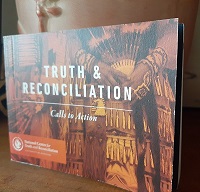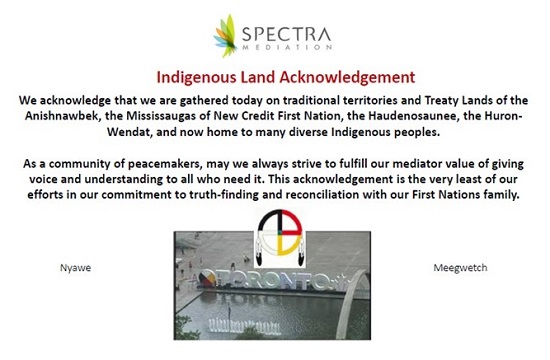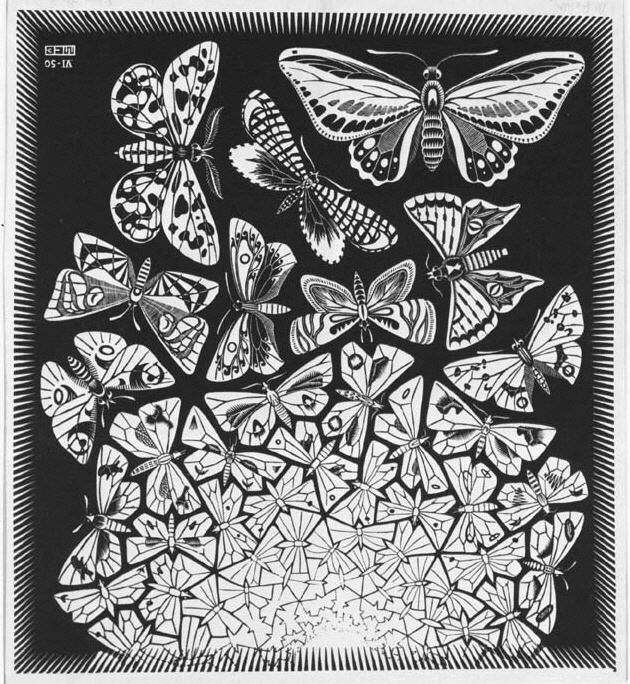Odetaan Maamawi … Reaching Together
Mardi June 21st, 2020
An open letter to Canada – as a response to the Truth & Reconciliation Committee’s Calls to Action. [Written June 2019]

I am a mediator. As such, I have learned that the top needs of any human are to be heard and understood. So I listen a lot, assisting a process that gives voice to people in conflict and people in pain, and that fosters increased understanding between them.
I am also a member of the ADR Institute of Ontario (ADRIO) a self-governing body for mediators and arbitrators, and Odetaan Maamawi, a working group and our professional community’s response to the Call to Action of the Truth & Reconciliation Committee. We work to listen… to learn, to understand, to better acknowledge our Indigenous family for both their inherent beauty and value, and their contributions to life in Canada. One such contribution in our field of dispute resolution is a talking circle model from age-old Indigenous restorative justice practice which is used in both victim-offender and community work. And our professional community strives to acknowledge the pain of our Indigenous family, arising from such travesties as a history of residential schools, cultural disenfranchisement, environmental illness, and the heartbreak of many missing and murdered Aboriginal women and their families.
Our group is not another committee. It is intended to be a heartbeat, a shift in consciousness and character of our organization, of values that need to be recognized and honoured, and of needs reflected in the TRC’s Call to Action that we as listeners and peacemakers are uniquely equipped to respond to.
The group’s name “Odetaan Maamawi”, given to us in an Anishnawbe ceremony, means in essence, “reaching together”. I would like today, in this month dedicated to Indigenous Peoples in Canada, to invite all of Canada to join in the spirit of odetaan maamawi. To listen, to learn, to understand … to reach out and respond, each in your own way in a new journey with Indigenous communities and individuals. Visit a local Friendship Centre … go to a Pow Wow… talk with an Indigenous Elder or mother or youth and ask them what they want you to understand about them… volunteer for an organization… read a Indigenous-authored book or biography with your child or grandchild… educate yourself on the land treaty where you live… read the report & recommendations of the Truth & Reconciliation Committee. Be a part of the awakening of Canada to its history and resulting responsibility to the people whose land we live upon and benefit from. Above all … we urge you to listen.
About 25 years ago, I went weekly to the Native Canadian Centre in Toronto and one day asked Ojibwe Elder Joseph Sylvester “how do I learn to dance around the Drum?” His answer, given with a smile … “one step at a time”.
The TRC asks each one of us to respond to one thing we can do. We don’t have to do it well, or publicly. There is no test at the end. We just need… really need to do something … one step at a time.
Mardi Edelstein, BA, Q.Med, AccFM
Seneca given name Awënyawenzoh
Principal, Spectra Mediation, Toronto
TRC Calls to Action can be found here: https://nctr.ca/assets/reports/Calls_to_Action_English2.pdf



 It is difficult, in times of conflict, grief or loneliness to remember things for which we are thankful, or to appreciate that one good thing in the bad. Sometimes, in the words of American philosopher Eric Hoffer “The hardest arithmetic to master is that which enables us to count our blessings”.
It is difficult, in times of conflict, grief or loneliness to remember things for which we are thankful, or to appreciate that one good thing in the bad. Sometimes, in the words of American philosopher Eric Hoffer “The hardest arithmetic to master is that which enables us to count our blessings”.

